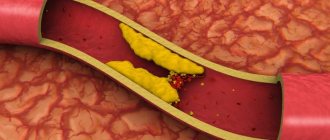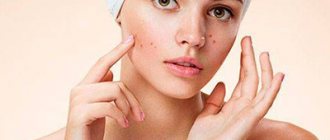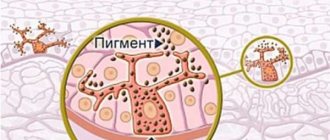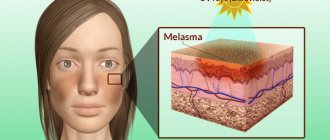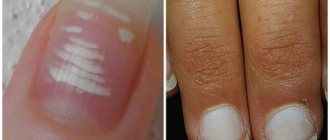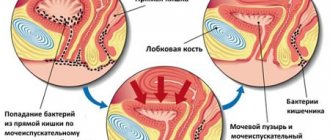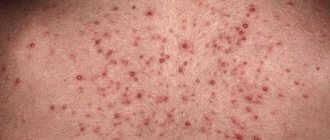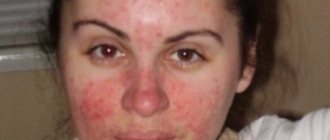Red spots on the face: reasons for their appearance
Red spots on the face can be of a very different nature and appear at different intervals. They can be located either in one place or throughout the skin of the face.
Reasons for appearance:
- Allergic reactions. When exposed to an allergen, these manifestations are accompanied by itching, burning, peeling and slight swelling.
- Dermatological diseases. Often spots occur with psoriasis, eczema, lichen virus, rosacea.
- Overheat. This unpleasant phenomenon can make itself felt after prolonged exposure to the sun, in a solarium or in a bathhouse.
- Feature of the skin. Very often they appear on very dry, sensitive skin.
- Exposure to cold. Cold has a detrimental effect on the skin of the face and can cause red spots to appear on it.
- Flushed face. This can happen due to exercise, stress, or increased blood pressure.
- Lack of vitamins in the body. An unbalanced diet can also affect the skin of the face.
In any case, when an illness appears, it is worth finding out its cause, because it can be a consequence of not only the banal influence of external factors, but a sign of a serious illness.
Causes of spots
The main causes of stain formation should be considered:
- food or drug allergies, as well as allergies to environmental factors or cosmetics;
- frostbite or overheating of the skin;
- lack of vitamins and/or other substances necessary for the healthy functioning of the body;
- skin damage by demodex, a type of subcutaneous mite;
- bacterial infections, such as streptoderma;
- viral infections, such as chickenpox;
- fungus on the skin;
- skin diseases, such as psoriasis, rosacea and others;
- infection of the body by parasites;
- diseases of the gastrointestinal tract;
- hormonal disorders;
- nervous tension;
- autoimmune diseases, such as lupus erythematosus;
- damage to the skin, which leads to dehydration and death of cells on its top layer;
- increased skin dryness;
- visiting a solarium or active cosmetic treatments on the skin.
Important! The appearance of red spots in children most often indicates an allergy to a new or overly allergenic food product. However, you should monitor the condition of the spot to see if it goes away after stopping the new product and taking allergy medication. If the stain remains in place, you should immediately consult a doctor.
Even if for some reason you did not go to the doctor in the near future, and the spot went away over time, be sure to inform your pediatrician about it at your next follow-up visit. In childhood, such spots may indicate the presence of serious disorders in the child’s body.
Young mothers should be especially attentive to their children and monitor what they pick up and what they come into contact with. It is almost impossible to follow all the movements of a child, and with dogs and cats it is often simply impossible to separate them. But, unfortunately, the result can be fungal diseases or other unpleasant skin lesions.
In this video you can find out how you can become infected with a fungal disease from an animal and what symptoms it is accompanied by:
What to do if red spots appear on your face and itch
In order to exclude reasons for concern, if red rashes occur on the skin of the face, you should visit a dermatologist. It will not only identify the cause of the disease, but will also tell you how to get rid of red spots that constantly itch.
To get rid of this unpleasant phenomenon, the following external medications can help:
- ointment based on chamomile or calendula;
- tar soap or cream;
- ointments and creams against allergies;
- face lotions with menthol;
- preparations to restore the condition of the skin;
- antiviral ointments;
- antibiotics;
- sedatives;
- antihistamines.
It should be noted that in addition to the main treatment, you should adhere to proper nutrition and avoid exposure to allergens on the body.
You can learn how to remove eyelash extensions at home from the article on our website.
Read about the use of castor oil for eyelashes and eyebrows in this article.
Here you can find an overview of L'Oreal hair color palettes.
Useful tips to speed up treatment
If there are red, scaly spots on your face caused by exposure to ultraviolet radiation or similar, then you do not need to go to the doctor immediately. Procedures that can be carried out at home will help you cope with them. If the cause of red spots, even at least theoretically, could be some kind of disease, then you must first visit a dermatologist.
First of all, you should review your facial skin care products. Perhaps some cream has expired. Or a new product was purchased, which ultimately became the reason that the face became covered with red spots. In general, it is also advisable to reconsider the principles of skin care.
- If you have specific skin conditions that are caused by heredity, you should select cosmetics that are suitable specifically for that specificity. And visit a cosmetologist a couple of times a year and undergo appropriate procedures. And also remove those products that may cause irritation.
- Use special disinfectant and anti-inflammatory cosmetics for problematic skin prone to pimples and acne.
- If red, slightly flaky spots on the face appear due to a natural hormonal imbalance (pregnancy, puberty), then you should just wait until the end of this period.
- For dry skin, use moisturizing creams.
- After salon cleaning, be sure to follow all the cosmetologist’s recommendations for further care.
After this, you need to reconsider your diet and overall lifestyle:
- add vitamins obtained from vegetables and fruits to your diet;
- remove as much as possible foods that can cause allergies (chocolate, citrus fruits, pickles, etc.);
- reduce or eliminate alcohol;
- if there is excessive physical activity, then reduce or remove it;
- try to be as nervous as possible;
- avoid significant temperature changes.
Sometimes it can be very difficult to reconsider your lifestyle and get rid of some habits. But if this is not done, then red spots on the face, which also itch, will appear with varying frequency. After all, most often they occur when there is an allergy to various products and cosmetics.
If red spots appear due to a disease, then drug treatment is necessary. But even here, most likely, you will have to give up alcohol for some time, because many drugs are incompatible with it.
How to treat red, scaly red spots on the face with folk remedies
Traditional medicine, of course, has not avoided this problem. There are many traditional ways to treat red, scaly spots on the face.
These include:
- Wiping the skin with a decoction of birch buds.
- Lotions made from infusions of celandine, yarrow and nettle.
- Rubbing the skin with fresh cucumber or ice cubes.
- Rubbing the face with a decoction of parsley or nettle.
Even if any pathology is diagnosed, folk remedies will not harm, but rather will speed up the healing process of the skin.
But before using one of the above recipes, you should make sure that you are not allergic to one or another component.
Herbal infusions
A decoction of birch buds is needed to get rid of inflammation and irritation . It has a calming effect and helps the skin recover. To make the decoction more effective, you need to add linden blossom or calendula tincture.
Decoction of birch buds
Among the available remedies for red spots, garlic helps. For garlic tincture you need 2 cloves and 2 times the volume of alcohol . Mix. Let it brew in a dark place for a week. Apply the product to the stain until it goes away. Be careful not to burn your skin!
Aloe juice also helps with red spots. Apply fresh juice to the stain twice a day, and after a week it will hardly be noticeable.
You might be interested to know about this: Fast-acting laxative in tablets
The best recipes for masks against red spots on the face
In practice, it has been proven that these unpleasant rashes can be treated very well with homemade masks.
In addition, masks prepared at home do not contain chemical components and gently exfoliate the skin of the face.
Mask recipes:
- Honey mask. Mix equal small amounts of honey and sour cream, add a few drops of lemon juice and olive oil.
- Cabbage mask. White cabbage, chopped to the maximum, is applied to the face for 30 minutes.
- Oatmeal mask. Finely ground oatmeal should be mixed with white clay, and then milk should be added to the resulting mass until a homogeneous porridge of medium thickness is obtained.
- Mask of parsley juice and sour cream. You need to squeeze out fresh parsley juice and mix it with rich sour cream; this mask can be made regularly.
- Mask with baby cream. A small amount of baby cream should be mixed with a drop of olive oil and a teaspoon of chamomile infusion.
- Egg yolk mask. Mix the egg yolk with two teaspoons of fresh lemon juice.
The advantage of masks is that they not only fight the problem, but also moisturize the entire skin of the face. After these procedures, the skin becomes soft and silky.
Folk recipes
Simple homemade masks and recipes for washing the effect are not as pronounced as from pharmacy creams, but they also help restore a healthy appearance to the face:
- Grind fresh cucumber and apply tightly to affected skin. Leave for 15 minutes, remove without washing. The same recipe helps get rid of age spots.
- Make a weak decoction of chamomile (pour water, boil; 1 tsp per glass), pour into molds, keep in the freezer. Use the resulting ice cubes to wipe your skin when allergies occur - this will help soothe it.
- Use lotions based on camphor alcohol to wipe off areas of redness that appear due to skin rashes, up to 2 times a day.
We suggest you familiarize yourself with red sores on the scalp
You don't have to go to a salon to remove blemishes from your skin. Using available folk remedies, you can prepare decoctions, lotions and masks to restore the skin.
Herbal infusions
Medicinal herbs are used to prepare decoctions. Chamomile and calendula have a calming and anti-inflammatory effect. A decoction of parsley, sage, birch buds, linden blossom, mint, oak bark and other plant components with a similar effect is also suitable.
Preparing the decoction will not take much time. You need to pour two tablespoons of herbs with a glass of hot water and leave for 30 minutes. Wipe 3-5 times a day.
The effect of the decoction will be more pronounced if you make lotions. Compresses based on black bread are especially effective. You need to soak fresh bread in the broth so that it softens slightly. Then apply to problem areas and leave for 15-20 minutes. After the time has passed, remove the lotions and cleanse the skin of any residue.
The use of masks speeds up the skin healing process. Apply once every 2-3 days until complete recovery. If there is severe redness, you can do it every other day. Keep on the skin for no more than 10 minutes.
Mix 1 tbsp. spoon of oatmeal, 2 tbsp. spoons of kefir and 1 teaspoon of honey. Avoid honey if you have allergies.
Mix 3 tbsp. spoons of cottage cheese, 1 teaspoon of honey and 1 teaspoon of lemon juice.
Mix sour cream and honey in equal proportions. 1-2 tablespoons of each component is enough.
Mix 1 teaspoon of sour cream and 1 tbsp. a spoonful of raw grated potatoes.
Pour half a glass of boiling water and add 3 tbsp. spoons of chopped parsley. Leave for 60 minutes. After time, mix with 0.5-1 cup of sour cream. The mixture should be thick.
Finely grate one boiled yolk and add 2 teaspoons of lemon juice.
Mix 2 tbsp. spoons of white clay, 2 teaspoons of lemon pulp and 1 tbsp. spoon of olive oil.
Mix 1 tbsp. a spoonful of baby cream, 1 teaspoon of chamomile tincture and 1 teaspoon of olive oil.
During treatment you will have to give up unhealthy and heavy foods. The following are included in the blacklist:
- fatty and fried;
- sweet;
- peppery, salty, hot, spicy;
- fast food;
- canned foods;
- semi-finished products;
- carbonated drinks;
- alcoholic drinks.
Instead, give preference to stewed and steamed dishes. Also drink plenty of water to speed up the elimination of toxins.
Hygiene
It is necessary to thoroughly cleanse the skin in the morning and evening, especially from cosmetics. Try to wash your face not with water, but with tonic. Hard water can increase irritation.
It is also necessary to change pillowcases every 1-2 days or wrap the pillow in a clean towel daily. Try not to touch your face with your hands. The same applies to the mobile phone screen and other surfaces.
Folk recipes for homemade masks will tell you how to quickly remove red spots on your face using products that you always have on hand. They can be done for 7-10 minutes every other day. If these are applications or lotions - daily.
Cucumber mask
Mix cucumber puree (50 g) with white clay (20 g), diluted to the desired consistency with a decoction of chamomile. It turns out to be a very effective mask for red spots on the face, regardless of the reasons for their appearance.
Honey mask
Mix 50 ml of honey with the yolk, add 2 drops each of orange and juniper essential oils.
Sour cream mask
Mix 20 grams of the fattest sour cream with raw, finely grated potatoes (50 grams). Add 5 drops of tangerine essential oil.
Oatmeal mask
You can eliminate red spots with a nourishing whitening mask. Mix 20 grams of oatmeal with 10 ml of lemon juice diluted with water.
Algae mask
If red spots do not go away for a long time, treat the skin with algae and clay. Leave the kelp to swell in water, squeeze out and mix in equal proportions with green or black cosmetic clay.
Mix 10 grams of full-fat sour cream, honey, lemon juice diluted with water, and olive oil. Add 5 drops of either vitamin A or E (or 2 drops of both).
Chamomile mask
Try removing dry red spots on your face with a mask of baby cream (30 g), chamomile infusion (a few drops), olive oil (10 ml). This remedy can even be used to treat children.
Parsley mask
Pour a glass of boiling water over chopped parsley leaves (20 g). Leave for an hour. Strain and use the greens for the mask, mixing it with sour cream in equal proportions. And the resulting infusion can be poured into molds for making cosmetic ice. This recipe will help those who have red spots on their face that are flaky and itchy.
Clay mask
The following mask will deal with red pigment spots on the face. Dilute white clay with warm chamomile infusion until the desired consistency is obtained. Add some lemon pulp and olive oil. This mask will also cope with the problem of rashes and acne.
Garlic tincture
Garlic tincture lotions effectively deal with red spots on the face, but they are contraindicated for treating sensitive, thin skin. Pour chopped garlic cloves with alcohol in a ratio of 1 to 2. Leave in a dark place for a week. Lubricate problem areas daily.
Mix birch buds, linden blossom, and calendula in equal quantities. Pour 50 grams of the mixture into 500 ml of hot water, boil for 15 minutes, cool, strain, and make daily lotions.
Why do spots appear on the face of newborns?
Unfortunately, the appearance of red spots on the face of a newborn is a fairly common phenomenon. It causes genuine anxiety among parents, and this is understandable.
It was already mentioned above that the appearance of such an ailment may indicate the presence of pathology in the body, so if such a problem arises, you should consult a pediatrician.
Possible causes:
- incorrect position of the fetus in the womb;
- infectious diseases of the mother suffered during pregnancy;
- unbalanced maternal diet;
- unfavorable climatic or environmental conditions in which the pregnant woman lived;
- smoking or drinking alcohol during pregnancy;
- Rh conflict between the pregnant woman and the fetus;
- fetal hypoxia.
As a rule, the appearance of red rashes in a newborn has a serious cause. In most cases, this disease is eliminated through treatment without recourse to traditional medicine.
In most cases, a specialist determines the cause of the unpleasant phenomenon without additional diagnostics.
Skin diseases
The reasons for the appearance of red spots on a woman’s face may lie in diseases of various organs.
The most common of them:
- hormonal imbalance;
- heart disease;
- diseased kidneys;
- diseased liver;
- high blood pressure;
- insufficient venous blood supply to the face;
- diseased gallbladder;
- problems with the gastrointestinal tract.
Pay attention to where exactly the spots are located and what nature they are.
The location of the spot corresponds to a specific organ
Often redness indicates organ diseases.
- Spots under the eyes and above the cheeks indicate high blood pressure.
- Redness on the nose indicates heart problems. If they are on the forehead and nose, it is most likely a sign of rosacea.
- Edema redness indicates kidney problems. Diseases of the liver and gall bladder are expressed by redness around the mouth and above the chin.
How to get rid of red spots on the face of a baby
Undoubtedly, the treatment method depends on the cause of the appearance of red rashes on the baby’s face. When a pathology is identified, a therapeutic course is prescribed, and in case of illness due to the influence of environmental factors, more gentle treatment methods are prescribed.
You can relieve a baby from ailment on the face as follows:
- In case of mechanical injuries, treatment of the damaged area of skin with antiseptics is prescribed.
- For allergies, the doctor prescribes antihistamines.
- When a birth pathology is detected, treatment is purely individual; sometimes surgical intervention cannot be ruled out.
- If the skin is irritated due to poor climatic conditions, the pediatrician will prescribe medications that will soothe the damaged areas of the facial skin.
In any case, the method of dealing with the problem that has arisen in the baby should be chosen only by a specialist. Under no circumstances should you self-medicate, as this may not only not bring a positive result, but also harm the baby’s health.
Bad habits
Smoking and alcoholism provoke red spots. On the face of women, the reasons are always the same: a decrease in the elasticity of blood vessels due to smoking, destruction of blood vessels due to alcoholism.
Smoking interferes with the normal functioning of blood vessels and prevents oxygen-rich blood from penetrating into the capillaries . Because of this, red spots often appear on the face of women who smoke. If tobacco is flavored with alcohol, you will get a permanently red, swollen face.
Stop smoking, let yourself be beautiful
If you give up bad habits, then within a month your skin will look much better, and after six months there will be almost no trace of the problem.
Read the new article in the section: Gallstone disease: treatment without surgery and diet
Preventing the reappearance of red spots
It is unlikely that after encountering the appearance of red spots on the face, anyone will want to experience this disease again. Dermatologists have developed a number of preventive measures that will significantly reduce the likelihood of this problem occurring.
These include:
- using only hypoallergenic cosmetics;
- compliance with personal hygiene rules;
- balanced diet;
- eliminate smoking and alcohol abuse;
- do not be exposed to allergens;
- carry out timely diagnostics of the body.
It should be remembered that the condition of the skin is significantly worsened by excessive consumption of flour products and salty foods.
Symptoms
If the face is covered with red spots, this may indicate both an allergy and the development of a pathological process. The clinical picture will be determined precisely by the underlying factor.
If dry red spots on the face are caused by an allergic reaction, the clinical picture may have the following additional symptoms:
- slight peeling;
- increasing redness with the intensity of exposure to the provoking factor;
- roughness and roughness of facial skin;
- the rashes itch and cause a feeling of tightness.
If the red spot is a symptom of a dermatological disease, the above-described clinical picture may be supplemented by the following signs:
- the spots begin to itch very much;
- rashes may crack due to scratching due to severe itching;
- Crusts may form at the site of scratching.
It should be noted that the clinical picture in some symptoms may be similar to a fungal disease such as pityriasis rosea. However, in this clinical case, the localization of spots on the face is extremely rare and is localized in the cheek area.
With allergies on the face, red spots may appear periodically and vary in intensity.
If the above symptoms appear, you should immediately seek medical help and not self-medicate. Unauthorized treatment can cause serious complications and even death. Red spots on the face of a baby may indicate a dangerous pathological process, so delay is unacceptable.
If you are convinced that red, scaly spots have appeared on the face as a result of an allergic reaction, exposure to cold or sunlight, or the wrong set of cosmetics, then you can identify the corresponding symptoms and signs:
- A red or pink spot on the face in the cheeks, nasal cavity or chin.
- Irritation or peeling, itching, unpleasant painful sensation.
- Redness on the face intensifies as exposure to any of the above factors occurs.
- The spots cause an unpleasant feeling of tightness, the skin has become rough to the touch.
- Often, the affected area of the face is covered with small scales, which can flake off in their place, leaving white spots that are dry to the touch, and when touched may be accompanied by a painful burning sensation.
If you notice any symptom, you need to consult a specialist. After all, such an ailment can interfere not only aesthetically, but also be a sign of one of the serious diseases, which, quite possibly, you could not even suspect before.
If you made the right decision and consult a specialist dermatologist, then evaluate additional symptoms, such as:
- Painful sensations in the joints.
- Increased body temperature.
- Acute pain in the heart area.
- Decreased heart rate.
- Inflammation of the lymph nodes.
- Frequent feeling of nausea.
This is the first signal that you need to immediately undergo a full course of medical examination. This will help you detect or exclude the presence of a serious disease, which, if not treated on time, can lead to the most terrible consequences.
Redness of the skin on the cheeks can be physiological or pathological. Physiological causes do not pose a health risk, and the symptom goes away on its own after the provoking factor is eliminated. Pathological causes can pose a serious danger. Urgent examination followed by subsequent therapy is required.
Red cheeks in an adult (natural causes are associated with the close location of capillaries to the surface of the skin) can be caused by the following provoking factors:
- physical or emotional stress (stress, anxiety, heavy lifting). The conditions are accompanied by increased blood flow and dilation of blood vessels in the cheeks;
- eating hot and spicy foods. They have a similar effect on blood vessels;
- prolonged exposure of the body to an inclination (washing the floor, work associated with inclination). As a result, blood flow to the facial part increases;
- exposure to cold wind. Blood vessels dilate to maintain skin thermoregulation;
- washing with cold water has a similar effect;
- long stay in a stuffy and hot room. Capillaries dilate to improve oxygen delivery;
- exposure to sunlight (causes vasodilation);
- squeezing the muscles of the cheek (resting on the hand, lying down) leads to a deterioration in blood circulation. After eliminating the compressive factor, a sharp restoration of blood supply occurs, accompanied by redness of the skin;
- rubbing the epidermis (massage, increased application of cream) causes an increase in blood supply;
- hitting the cheek against an object or during a fight. Redness is caused by a temporary increase in blood flow.
Natural causes are accompanied not only by an increase in the color of the cheeks.
There may be additional symptoms such as:
- heat in the cheeks;
- sudden loss of strength;
- pain when touching the affected area.
Physical reasons do not cause a malfunction in the body, but frequent redness can provoke a deterioration in the condition of the blood vessels on the cheeks. Therefore, if possible, it is recommended to avoid provoking factors.
Redness of the epidermis on the cheeks can be caused by increased sensitivity of the skin to any external influence. The pathology is caused by a disruption of the immune system. As a result of even the slightest influence of a provoking factor, blood flow increases and blood vessels dilate.
We invite you to familiarize yourself with the Diet for seborrheic dermatitis on the head and face. Permitted and prohibited foods for seborrheic dermatitis.
Reasons for the development of redness due to hypersensitivity:
- windy weather (even with light wind);
- exposure to sunlight or temperatures below zero;
- a sharp change in external temperature indicators (change from heat to cold and vice versa);
- water of increased hardness;
- eating (even cold dishes);
- light pressure on the cheek;
- wiping your face with a hard towel; The cause of red cheeks in an adult may be a simple failure to comply with hygiene rules.
- slight disturbances;
- calm walking over long distances.
Redness of the cheeks due to hypersensitivity may additionally be accompanied by:
- burning and itching;
- a feeling of heat not only on the cheeks, but throughout the body;
- soreness at the site of redness;
- increase in body temperature.
The pathology cannot be treated. But you can strengthen the condition of blood vessels by taking vitamin complexes. An examination and a therapist are required.
Redness of the cheeks can be a symptom of dermatological diseases.
| Types of diseases (division is made according to the type of pathogen) | Brief list of diseases | Reasons for development | Accompanying symptoms |
| Fungal |
|
|
With severe lesions, loss of strength, increased body temperature and the presence of purulent formations are possible. |
| Bacterial |
| ||
| Viral |
| ||
| Immune |
| Transmission of the disease occurs at the genetic level. |
Dermatological causes are distinguished by the presence of additional symptoms. Diseases are dangerous due to the development of complications and the addition of secondary infections. Treatment is prescribed by a dermatologist after examination.
Red cheeks (in adults, as in children, the causes are caused by the body's response to the pathogen) can be a symptom of an infectious disease.
| Name of the disease | Reasons for the development of the disease | Associated symptoms |
| Measles | Transmission of infection occurs through contact with a carrier. After recovery, immunity to the disease is formed for life. Since these diseases are vaccinated in childhood, the infection can only affect an unvaccinated person. Rubella can be transmitted from mother to child in utero, causing developmental damage to the fetus. |
|
| Rubella |
|
Other infectious diseases can also cause redness on the cheeks, which is caused by an increase in body temperature and an increase in blood circulation through the vessels.
The cause of redness may be allergic diseases, which are dangerous due to swelling of internal organs and possible failure of them to function.
| List of diseases | Causes | Possible symptoms |
| Atopic and contact dermatitis |
|
In severe forms, there may be an increase in temperature, difficulty breathing, and disruption of the gastrointestinal tract. |
| Hives | ||
| Toxidermy |
Internal illnesses
Diagnostics
Why should you not postpone a visit to a doctor if red rashes appear? Remember that the uncontrolled course of the disease and its ignoring can aggravate the symptoms and cause the spread of the process. So, if the cause of the disease is a bacterial infection, one of the possible complications is sepsis, and this is a direct threat to life. Two or three small spots are not a reason to panic, but if they appear regularly in the same place, it is worth thinking about the nature of the phenomenon. Dermatologists advise monitoring these types of rashes. You should seek medical help if the spots do not disappear within 2–3 days, change appearance and/or are accompanied by other associated symptoms.
When should you visit a doctor urgently?
- Intense, continuous itching in the affected area (may intensify at night);
- Flaky surface of spots;
- The lesions become wet and turn into wound formations;
- The spots noticeably increase in size;
- When pressed and touched, the redness is painful;
- The rash has swelling;
- In the area where the spot is localized, the inflammatory process begins;
- The rash is swollen and has a hot surface.
You can seek medical help from specialists such as a dermatologist, dermatovenerologist or endocrinologist .
To begin with, the doctor will conduct a visual diagnosis to determine the nature and location of the lesions. An oral conversation is also necessary to establish the patient's general history. For an accurate diagnosis, a number of studies will be required, including scraping from the affected area of the epidermis, a general analysis of urine and blood (sometimes a stool test for worm eggs is required to exclude helminthic infestation).
If you are prone to allergies, allergy tests (skin tests) will be required. The venereologist will ask you to take a series of tests to detect STDs. In some cases, an ultrasound examination of internal organs is performed. If necessary, the doctor may prescribe additional diagnostic measures.
Symptoms
A woman with erythema (redness due to dilated capillaries) and a “butterfly” on her face, typical of systemic lupus erythematosus symptoms.
For the initial stage of solving the problem, it is important to remember:
If the appearance of red spots is accompanied by sneezing, increased lacrimation and coughing, this is most likely an allergic reaction. In cases where redness and spots are very itchy and flaky, you should suspect a dermatological disease and seek medical help.
In practice, identifying the cause of localized redness on the skin can be difficult. This is explained by the fact that the symptoms of the phenomenon itself (itching, swelling, swelling at the spot, its shape and pattern, local increase in skin temperature in the area, etc.) and what disease the spot is a symptom of are not always diagnosed after the first consultation.
In some cases, the problem requires a comprehensive laboratory test. However, there is a standard list of conditions and characteristics for assessing red spots on the face , which allows you to determine the main signals of a particular disease.
- The location of areas of redness and accompanying symptoms become the primary factor for diagnosing diseases and dysfunctions of the body:
- Localization in the area of the upper part of the cheekbones and on the skin of the lower part of the orbital cavity - hypertensive phenomena;
- Spots appear on the wings and tip of the nose and have a purple tint - cardiac dysfunction, vascular dysfunction;
- The spot is located in the perioral area - dysfunction of the secretory organs (liver, gall bladder, pancreas);
- Rash and redness with spots on the bridge of the nose and cheeks, shaped like a butterfly - autoimmune systemic lupus erythematosus (Libman's disease);
- Red swellings and spots on the chin are a symptom of hormonal imbalance;
- Hemorrhagic spots and rashes with hemorrhages, having a chaotic location (may be accompanied by tingling and itching) - impaired function of the kidneys and adrenal glands;
- Red spots with peeling, appearing against the background of a rise in temperature and general weakness - infectious diseases (measles, rubella, scarlet fever, chicken pox, etc.);
- Chronic red spots with a bumpy surface dotting the cheeks, forehead and nose are a symptom of rosacea (rosacea), rosacea or thrombocytopenic purpura.
Important: the appearance of red rashes on the face, if accompanied by symptoms such as swollen lymph nodes, sore throat and low-grade fever, often indicates the presence of HIV. Also, the symptoms are similar for the initial stages of syphilis and some STDs.
A reminder for determining the type of spots depending on the symptoms (color, shape, size, structure):
- Whitish-red spots that are uniform in color saturation are a sign of frostbite;
- Smooth and reddish spots with a large coverage area - a reaction to cold, a stressful situation or exposure to ultraviolet radiation;
- Swelling spots - eczema, dermatitis, impending inflammation (pimple, boil), reaction to an insect bite;
- Pustular redness and spots with crusts – streptoderma;
- Redness with a weeping surface – eczema, neurodermatitis, atopic dermatitis;
- Acne-shaped spots are a symptom of increased activity of the sebaceous glands;
- Red spots with swelling – kidney dysfunction;
- Redness and spots with a bluish (purple) tint are a reaction to low temperature or UV radiation;
- Spots with a rough surface (without peeling) – dehydration of the body;
- Spots with a rough surface and peeling are scabies.
Helpful advice: red spots that do not cause discomfort sometimes indicate the presence of a serious infectious, systemic or viral disease. To avoid complications, consult a dermatologist to diagnose the disease.



